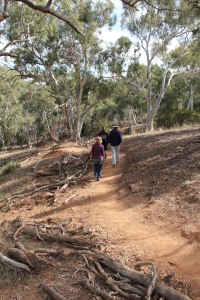Welcome to the family Blog
June 25, 2012 Leave a comment

Three images I’ve looked at today coming out of the family blog. Top is a cute brown thornbill nestling in the thorns at Natural Newstead (see blog 6). Middle is a cartoon relating to academics obsession with quantity being discussed by Ideas for Sustainability (see blog 3). And bottom is an image of an urban silvereye. QAEG scientists have discovered urban silvereyes sing different songs to their country cousins (see blog 4). It’s a bit like different blogs. We sing similar songs in different dialects.
Hello CLEAR-as-Blog readers. Are there any of you still out there? It’s been a long time between drinks.
Pia and Karen posted something last week but before that our last blog was in December 2011. We’ll try to do a bit better from here on. In this instalment, I’d like to introduce you to some of the cousins of CLEAR-as-Blog. The extended family, so to speak. In so doing it becomes apparent that there are many different types of blogs serving different needs and desires.









You must be logged in to post a comment.